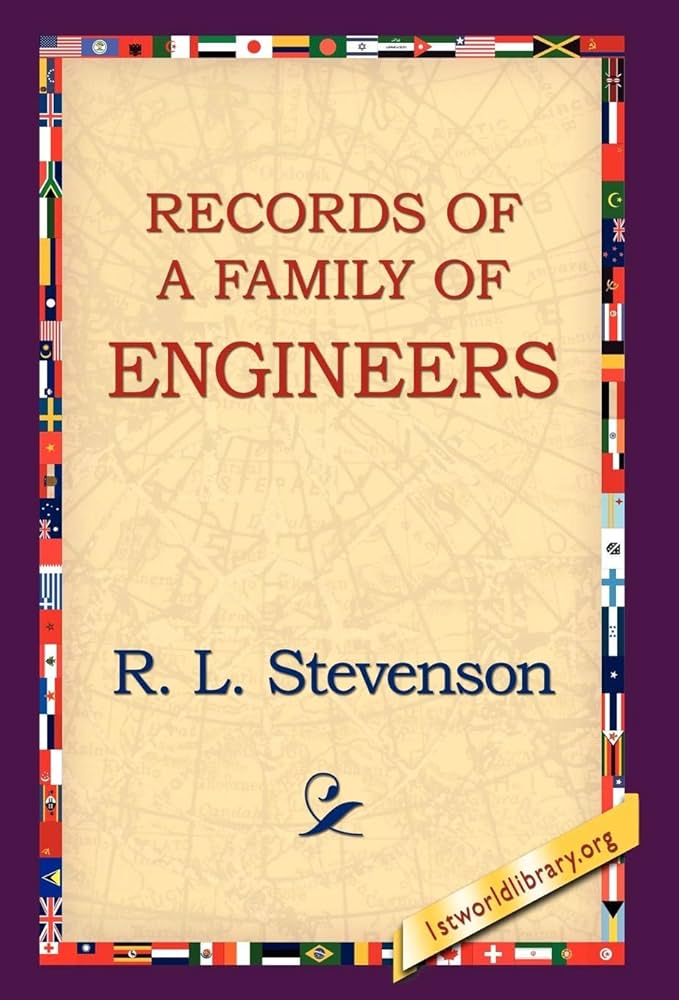Chapter II — Records of a family of engineers
byChapter II begins with Robert Stevenson stepping fully into his role as the singular engineer of the Northern Lighthouse Board after parting from his earlier partnership with Thomas Smith. From 1807 onward, Stevenson not only supervised the technical aspects of lighthouse design and construction but also assumed a quasi-familial responsibility for the well-being of the lighthouse staff. Isolated and often stationed far from society, lightkeepers lived in conditions that tested both their discipline and their spirits. Stevenson understood that prolonged solitude could breed conflict, lethargy, or carelessness, so he instilled a culture of order and attentiveness. Letters and reports from the period show a man who saw moral and operational vigilance as inseparable. His expectation was not just functional lights, but clean quarters, harmonious relationships, and unwavering duty, no matter the remoteness of the post. Yet even within this rigid structure, Stevenson’s actions showed a deeply human understanding of the pressures faced by those he managed.
Stevenson’s leadership style merged high expectations with pastoral oversight. He issued clear directives to ensure maintenance was performed regularly and that no light was left unattended. Keepers were told to maintain constant vigilance, with emphasis placed on personal responsibility and professional pride. In one instance, his frustration grew when lightkeepers devised ways to evade surprise inspections by signaling one another across stations—proof of their tight-knit camaraderie but also a challenge to his authority. Still, Stevenson didn’t simply issue reprimands; he took time to understand these dynamics and address the underlying causes, preferring correction over punishment when possible. He visited stations personally, often hosting keepers at his own table, listening to their stories, and asking after their families. This rare blend of discipline and empathy earned him enduring respect. He saw each keeper not just as a worker, but as a representative of a public trust, a figure tasked with guarding the seas for all who passed near.
The isolation of lighthouse life sometimes became overwhelming, especially during harsh winters or when tempers flared in close quarters. Stevenson’s attentiveness to social harmony revealed his belief that the human side of engineering could not be overlooked. He recognized that well-maintained machinery meant little if the men operating it were discontent or unwell. When disputes arose, he mediated with fairness and concern, understanding that trust within a team was as vital as technical precision. Supplies were delivered not just with practicality but with foresight into mental health and morale. His frequent and detailed correspondence gives the impression of a man watching not only the lights but the lives behind them. Stevenson’s devotion extended to families of the keepers too, often helping with education or job prospects for their children—a practice rare for employers of the time.
His relationship with younger crew members and junior engineers reflects this nurturing side even further. One of the more emotional accounts in this chapter centers on George Peebles, a promising young foreman builder who perished during a storm. Stevenson mourned Peebles not merely as a colleague but as someone in whom he had invested mentorship and hope. The loss underlined the danger of maritime work and the risks these men took not only in construction but also in simply traveling to and from their posts. It also revealed Stevenson’s emotional stake in the careers and safety of his workers. This paternal leadership style—firm, involved, and emotionally grounded—defined Stevenson’s impact within the Northern Lights system. He was as concerned with the men who lit the beacons as with the masonry that held the towers upright.
Through these intimate managerial efforts, Stevenson established a professional culture within the lighthouse service that blended engineering precision with a deep commitment to people. The values he upheld—reliability, discipline, humanity—resonated through generations of lighthouse staff. His hands may have drawn the blueprints, but it was his character that built the trust and continuity that kept the Northern Lights shining through fog, storm, and long nights.

